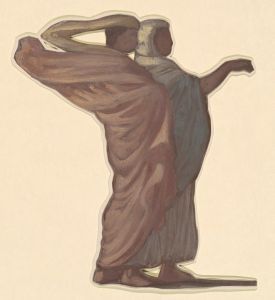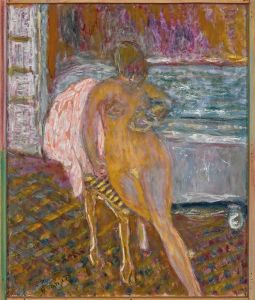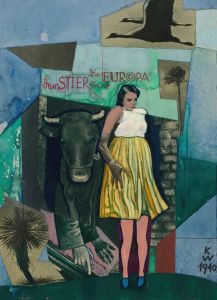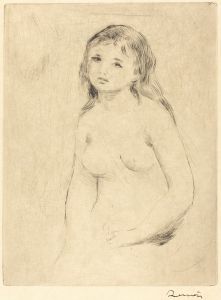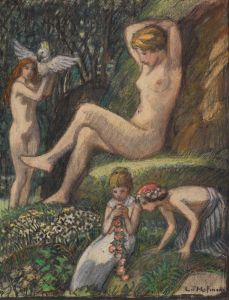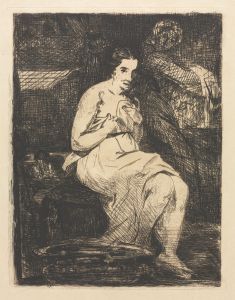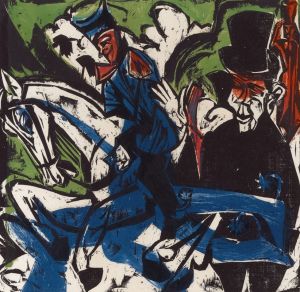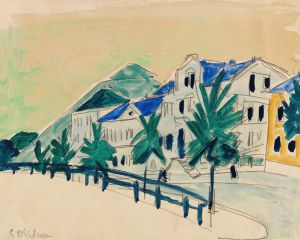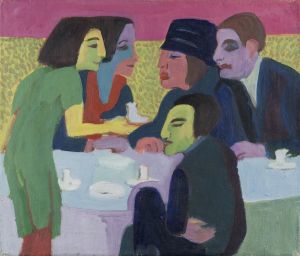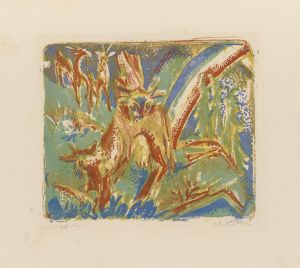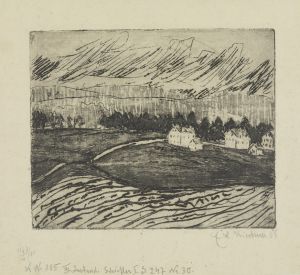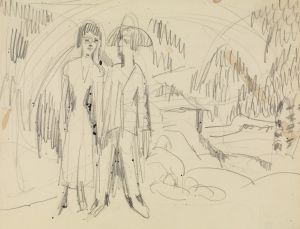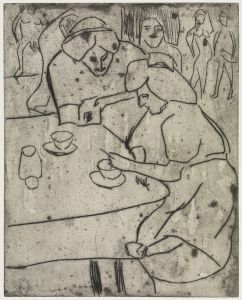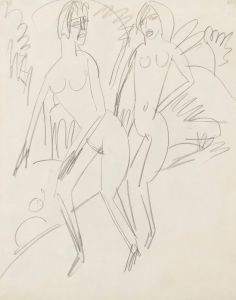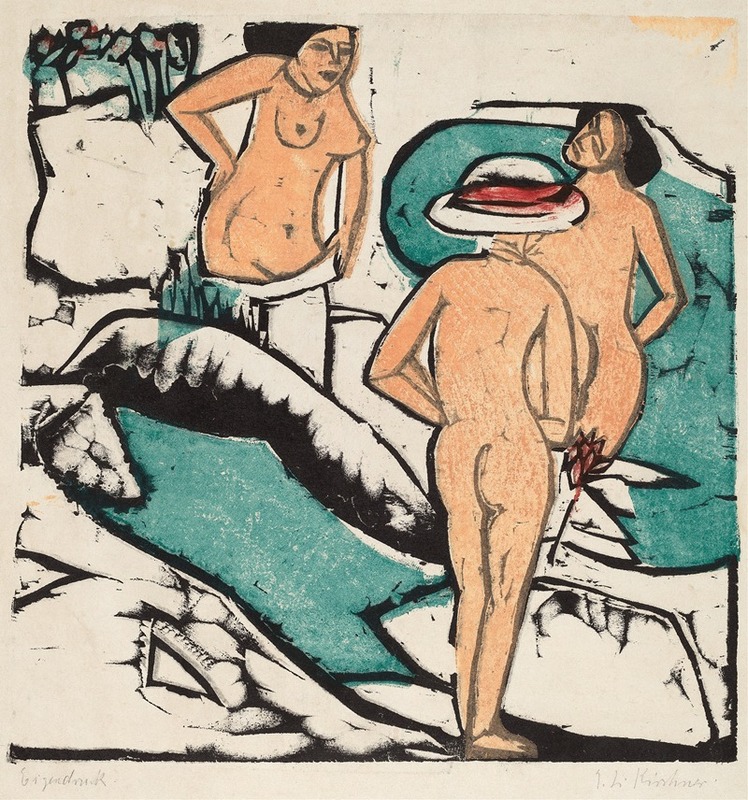
Women Bathing Between White Stones
A hand-painted replica of Ernst Ludwig Kirchner’s masterpiece Women Bathing Between White Stones, meticulously crafted by professional artists to capture the true essence of the original. Each piece is created with museum-quality canvas and rare mineral pigments, carefully painted by experienced artists with delicate brushstrokes and rich, layered colors to perfectly recreate the texture of the original artwork. Unlike machine-printed reproductions, this hand-painted version brings the painting to life, infused with the artist’s emotions and skill in every stroke. Whether for personal collection or home decoration, it instantly elevates the artistic atmosphere of any space.
Ernst Ludwig Kirchner was a prominent German expressionist painter and one of the founding members of the artist group Die Brücke (The Bridge), which played a pivotal role in the development of modern art in the early 20th century. Kirchner's work is characterized by its bold use of color, dynamic compositions, and a focus on the human figure, often exploring themes of modernity and the human experience.
"Women Bathing Between White Stones" is one of Kirchner's works that exemplifies his expressionist style. Although specific details about this particular painting are limited, it can be contextualized within Kirchner's broader body of work and the themes he frequently explored. Kirchner often depicted scenes of nudes in natural settings, a subject that allowed him to experiment with form, color, and composition while also engaging with the theme of the human connection to nature.
In Kirchner's oeuvre, the motif of bathing figures is recurrent, reflecting his interest in the liberation of the human body and spirit. This theme is consistent with the ideals of Die Brücke, which sought to break away from traditional academic art and embrace a more direct, emotional form of expression. The group's work often featured vibrant colors and distorted forms, aiming to convey emotional experiences rather than realistic depictions.
The setting of "Women Bathing Between White Stones" suggests a natural environment, which is a common backdrop in Kirchner's paintings of nudes. This choice of setting can be seen as a reflection of the artist's desire to return to a more primal and unencumbered state of being, away from the constraints of urban life. The use of white stones in the title and presumably in the painting itself may serve to enhance the contrast between the figures and their surroundings, a technique Kirchner often employed to draw attention to the human form.
Kirchner's work was heavily influenced by non-Western art forms, including African and Oceanic art, which he encountered through ethnographic museums and collections. This influence is evident in his stylized figures and bold use of color, which can be seen in many of his paintings, including those depicting bathing scenes.
Throughout his career, Kirchner faced numerous challenges, including the trauma of World War I and the subsequent political turmoil in Germany. His work was later condemned by the Nazi regime, which labeled it as "degenerate art." Despite these challenges, Kirchner's contributions to the expressionist movement have left a lasting impact on the art world.
While specific information about "Women Bathing Between White Stones" is limited, it is clear that the painting fits within the broader context of Kirchner's exploration of the human form, nature, and the emotional depth of human experience. His innovative approach to color and form continues to be celebrated for its influence on modern art and its ability to convey the complexities of the human condition.





